1. Introduction: 🥐 A Pastry with a Secret Past
The history of croissant is as rich and layered as the pastry itself. If there’s one treat that sparks excitement across breakfast tables worldwide, it’s the croissant. But here’s the million-dollar question: where did it actually come from?
Picture this: You’re sitting in a Paris café on a crisp spring morning, the chatter of locals mixes with the clinking of coffee cups. A waiter sets down your order: a golden French pastry, still warm from the oven. You tear off a piece—the flaky, buttery layers melt instantly in your mouth. Ah, nothing says France like this moment.
But here’s the delicious twist: the history of croissant wasn’t born in France at all. Its origins trace back to Austria, where bakers shaped the first crescent breads, known as Kipferl.
💭 Imagine walking through Vienna in the late 1600s—bakeries filled with the scent of freshly baked crescents, each bite symbolizing victory after the Siege of Vienna. Fast-forward a century, and Marie Antoinette brings her love for Kipferl to France, sparking a culinary revolution.
So, how did a simple Austrian pastry evolve into the global breakfast icon we can’t imagine mornings without? Let’s peel back the layers of history—much like a flaky crescent itself—and uncover its fascinating journey.
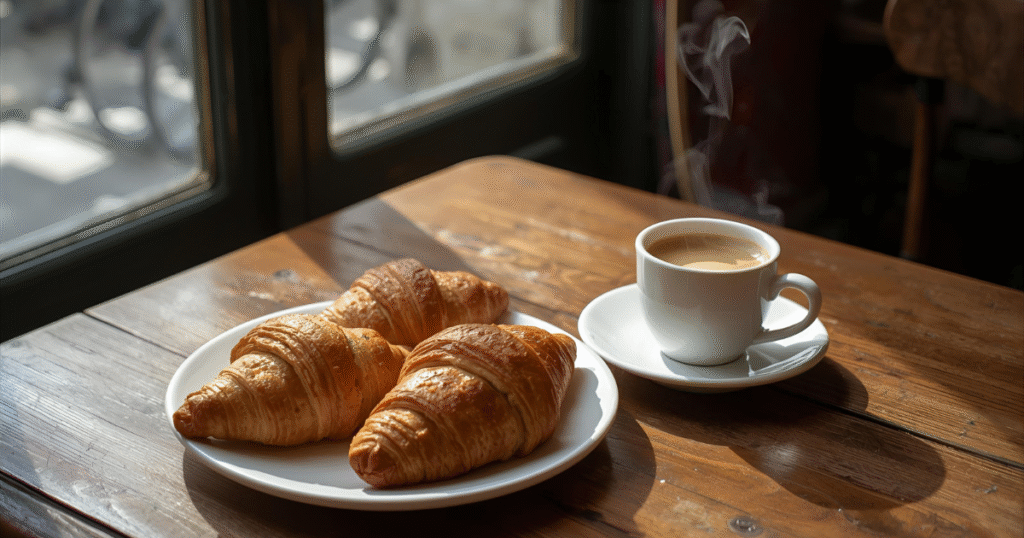
2. The Austrian Kipferl: Crescent of Victory (1683)
Long before Parisian cafés served buttery crescents, bakers in Vienna were shaping Kipferl — crescent-shaped pastries that date back centuries.
Legend ties their popularity to the Siege of Vienna in 1683, when the city’s bakers, working late into the night, heard the Ottoman army tunneling below the city walls. They alerted the guards, and Vienna was saved. To celebrate, bakers created pastries in the shape of the crescent moon, the symbol of the Ottoman Empire — a delicious way to mark victory.
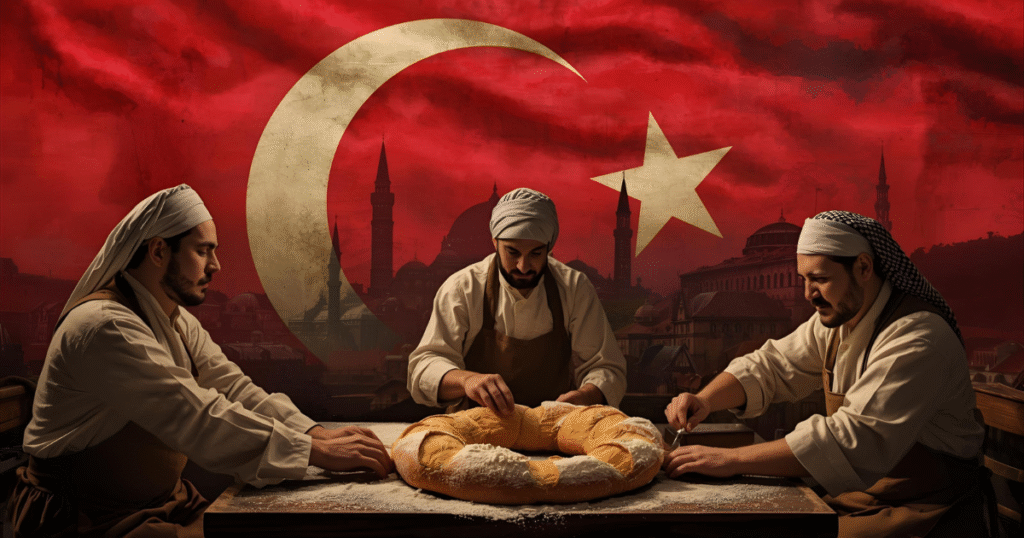
Unlike today’s airy flaky delight, the Kipferl was denser and bread-like, often made with nuts, spices, or sugar. It carried not just flavor but cultural symbolism.
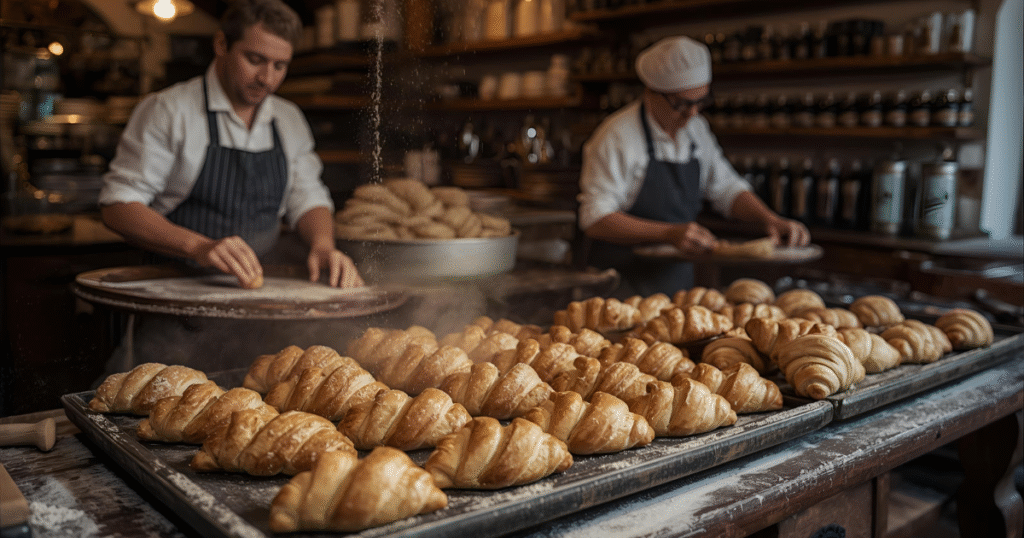
3. Marie Antoinette and the Kipferl in France (1770s)
Enter Marie Antoinette, the Austrian princess who married into the French royal family. Homesick for Vienna, she brought her love for Kipferl to Paris.
While it’s debated how much credit she deserves, French bakers were certainly inspired by these crescent pastries. Paris soon began experimenting with richer, buttery versions, laying the foundation for what would become the modern laminated pastry.
Mini-Story: Imagine Marie Antoinette at Versailles, craving a taste of home, requesting her royal bakers to recreate the Kipferl she grew up with. That simple craving changed breakfast forever.
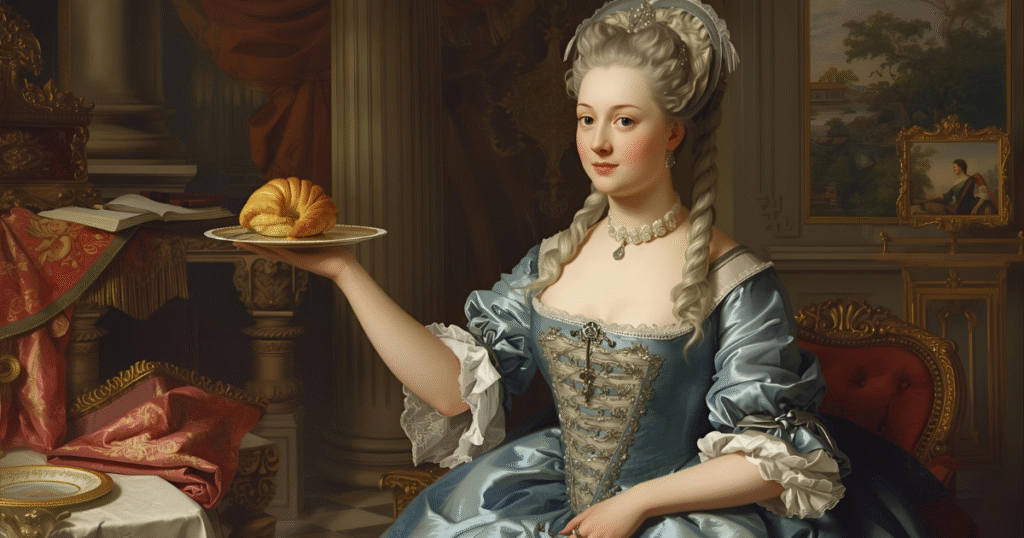
4. The Birth of the French Croissant (19th Century)
By the 19th century, Parisian bakers transformed the Kipferl into something entirely new using laminated dough — a labor-intensive technique of folding butter between layers of dough to create a light, flaky texture.
This innovation gave rise to the golden breakfast icon we know today: buttery, airy, and irresistibly flaky. In Paris, the crescent-shaped pastry became not just food but a cultural symbol of refinement.
Croissants were served in elegant cafés, enjoyed with coffee, and soon became a morning ritual across France.
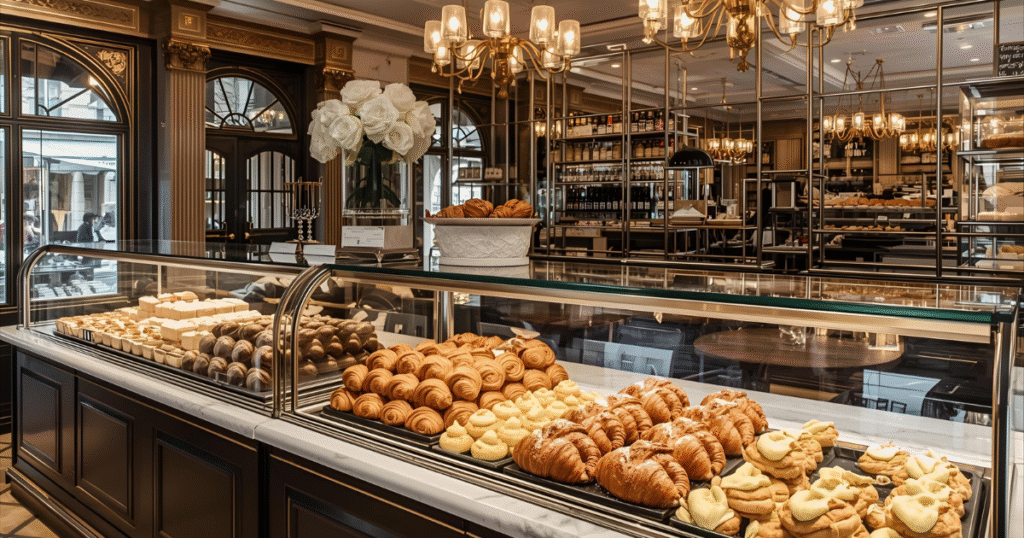
5. Croissant vs. Kipferl: What’s the Difference?
| Feature | Kipferl (Austria) | Croissant (France) |
|---|---|---|
| Dough | Bread-like, denser, often sweetened or spiced | Laminated, buttery, flaky |
| Texture | Chewy and rich | Light, airy, layered |
| Symbolism | Festive, tied to Austrian tradition | Sophistication, French culture |
| Origins | Pre-dates flaky crescent by centuries | Reinvented in Paris, 19th c. |
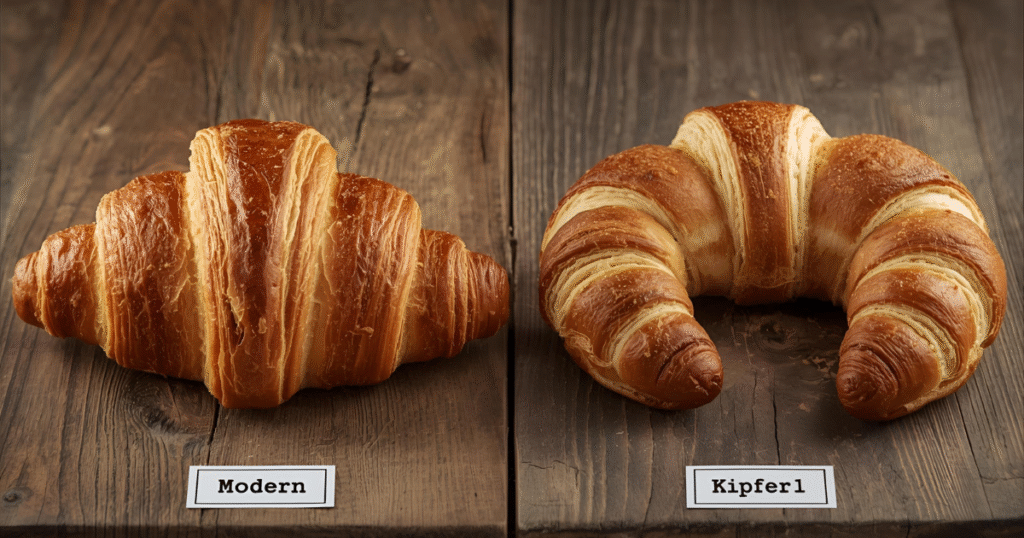
6. Croissants as a Parisian Icon (20th Century)
By the 20th century, the croissant wasn’t just breakfast — it was a Parisian symbol. Cafés proudly displayed trays of fresh croissants, and writers like Ernest Hemingway often mentioned them in descriptions of Paris life.
Croissants were now linked with elegance and leisure — a pastry you savored slowly with a newspaper or book, not just food but an experience.
By the early 20th century, the golden French crescent wasn’t just breakfast — it was a Parisian symbol. Cafés proudly displayed trays of freshly baked delights, and writers like Ernest Hemingway often mentioned them in descriptions of Paris life.
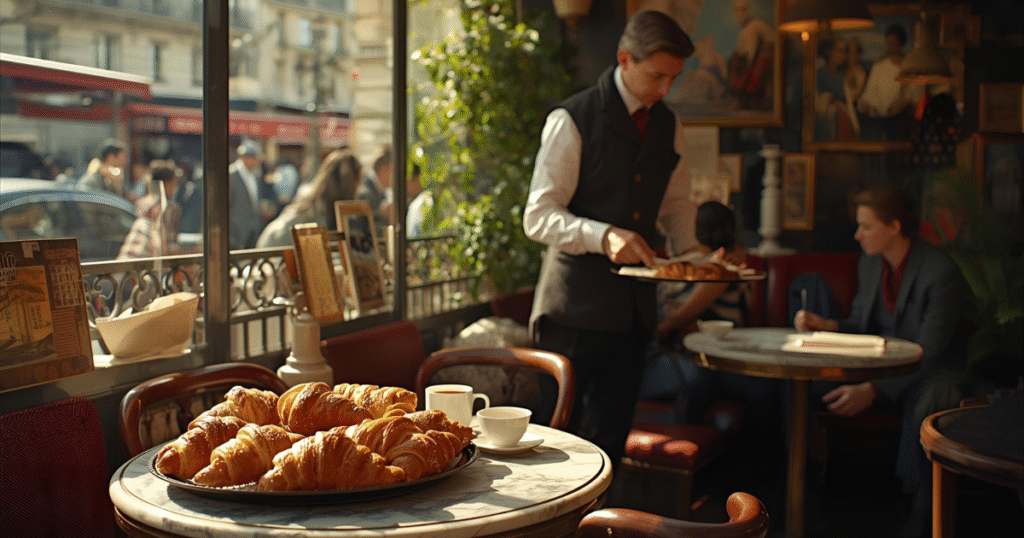
These pastries were now linked with elegance and leisure — a food you savored slowly with a newspaper or book, not just nourishment but an experience.
7. Croissants in the 21st Century: Global & Social Media Star
Fast forward to today, and the buttery crescent is no longer limited to French cafés. It has become a global pastry star. From Tokyo cruffins to New York cronuts, chefs constantly reinvent it for the modern foodie.
And let’s not forget social media’s role. Instagram feeds overflow with flaky creations — rainbow-colored, matcha-filled, or giant-sized versions. TikTok trends feature “crescent hacks,” like cutting and air-frying them into sweet desserts.
The golden corissant pastry has become both heritage and trend, showing its timeless appeal in the digital age.
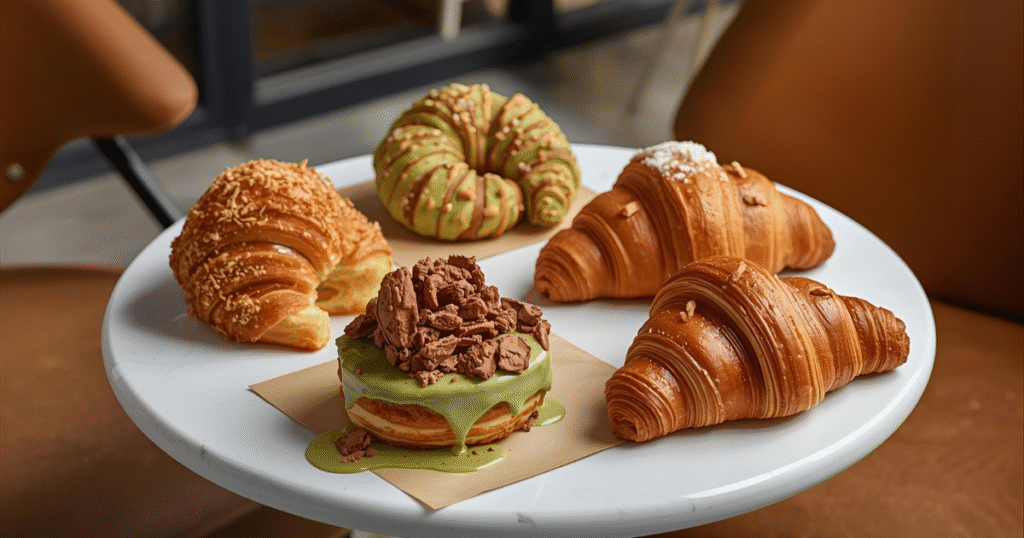
8. 👩🍳 Recipe Corner: Bake Your Own Croissants
Want to experience the magic at home? While making a laminated pastry takes patience, here’s a simplified recipe overview:
Ingredients:
- 4 cups all-purpose flour
- 1 cup cold unsalted butter
- 1 cup warm milk
- ¼ cup sugar
- 2 ½ tsp yeast
- 1 tsp salt
Steps:
- Make the dough, let rise.
- Roll and laminate with butter.
- Shape into crescents.
- Proof until puffy.
- Bake at 375°F (190°C) until golden.
👉 Pair with coffee or hot chocolate, and you’ll understand why this pastry became legendary.
9. Timeline of Croissant History
- 1683 🥨 Austrian Kipferl: Created after the Siege of Vienna
- 1770s 👑 Marie Antoinette: Introduces Kipferl to French court
- 19th century 🥐 Parisian bakers perfect laminated dough
- 20th century ☕ Becomes a Paris café icon
- 21st century 🌍 Global trends: cronuts, cruffins, gourmet flavors
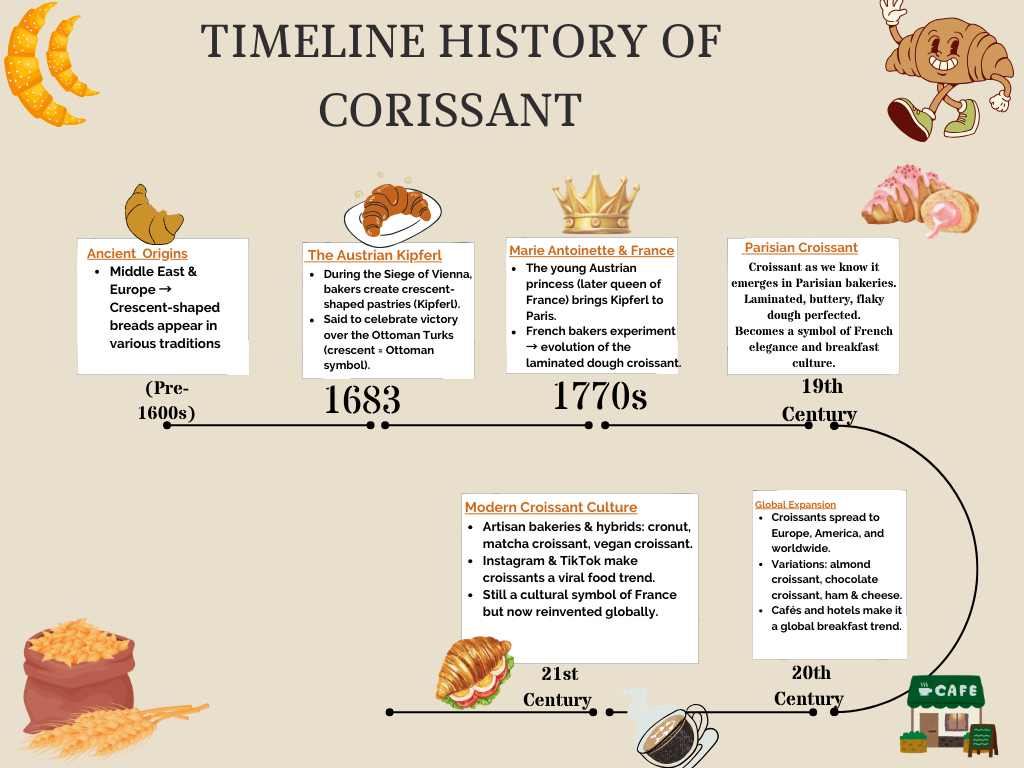
10. Grandma’s Kitchen: The First Time I Tried a Tradition
I still remember sitting in my grandma’s kitchen when she surprised me with a warm flaky crescent. She had bought it from the only French bakery in town. She buttered it, added homemade jam, and told me:
“This is not just bread. This is France in a bite.”
Her words remind me how food connects us to culture, memory, and history — just like the Kipferl and French pastry connect Austria and France.
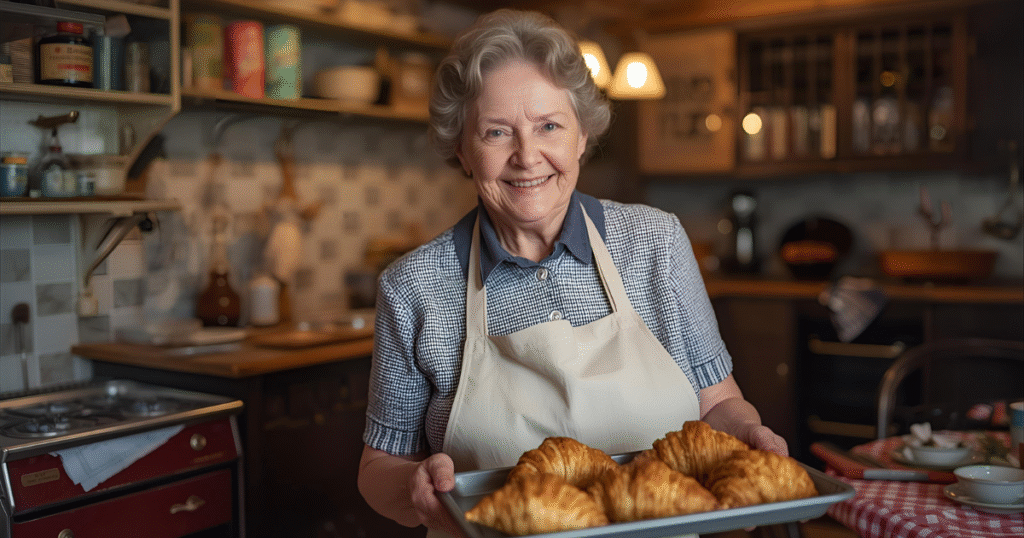
11. FAQs
Q1: Did croissants originate in Austria or France?
👉 The idea began with Austria’s Kipferl in 1683, but the buttery version was perfected in 19th-century Paris.
Q2: Why are they crescent-shaped?
👉 The crescent shape came from the Kipferl, symbolizing victory over the Ottoman Empire.
Q3: Was Marie Antoinette really behind croissants?
👉 It’s more myth than fact, but her love for Austrian pastries inspired French bakers.
Q4: How did they become a global trend?
👉 Through Parisian cafés, international tourism, and modern pastry innovations like cronuts and vegan versions.
12. Conclusion: A Crescent of Culture
From the Austrian Kipferl to the French flaky crescent and global pastry icon, this treat carries centuries of history, myth, and meaning. Today, whether you enjoy it plain, filled with chocolate, or reinvented as a cruffin, remember: this is not just food. It’s a story of victory, elegance, and tradition — all in one golden bite.

👉 Call to Action: Next time you enjoy one, share its story with a friend — because every pastry has a past.
